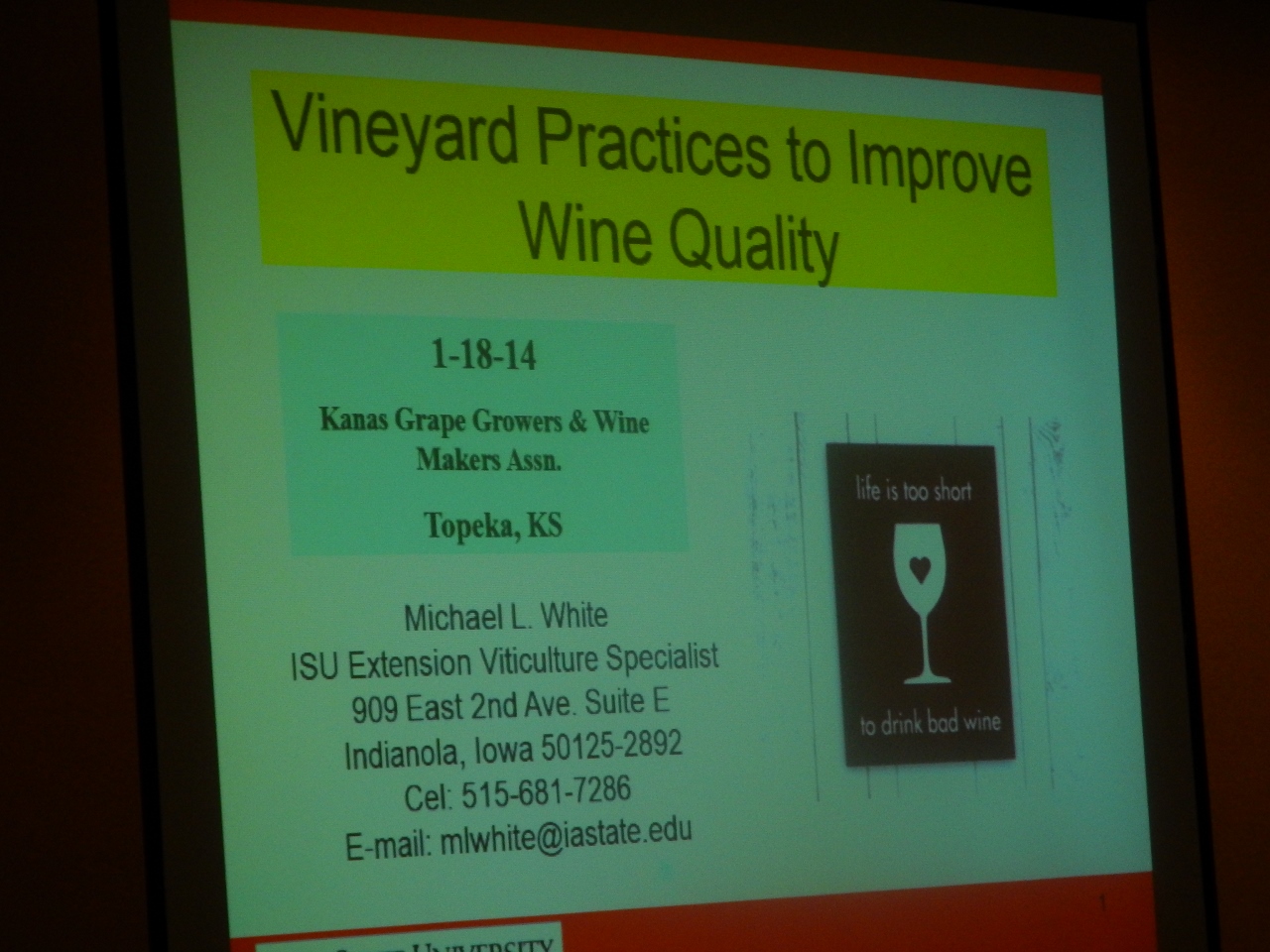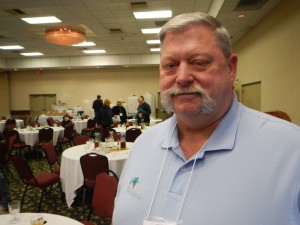Kansas Wine Conference’s Viticulture Focus Pleases Attendees
 Earlier this month, the Kansas Grape Growers & Winemakers Association (KGGWA) held their annual conference in Topeka. The KGGWA is the bigger of two wine industry groups in the state – the other is the Kansas Viticulture and Farm Winery Association (KVFWA). The KGGWA event has grown considerably since last year. Vice-President and owner of Prairie Fire Winery, Bob DesRuisseaux, said about 200 people attended the conference – up from 75 attendees in 2013.
Earlier this month, the Kansas Grape Growers & Winemakers Association (KGGWA) held their annual conference in Topeka. The KGGWA is the bigger of two wine industry groups in the state – the other is the Kansas Viticulture and Farm Winery Association (KVFWA). The KGGWA event has grown considerably since last year. Vice-President and owner of Prairie Fire Winery, Bob DesRuisseaux, said about 200 people attended the conference – up from 75 attendees in 2013.
“People are seeing that we’re successful with it
[planting vines] and that we’re producing quality, award winning wines and they want to be a part of it,” he said. In recent years, winemakers in the state have added sparkling wine and Crimson Cabernet dry red to more traditional offerings.
DesRuisseaux — who makes sparkling using the traditional methode champenoise – said the conference aimed to provide quality education for local winemakers and vineyard owners at an affordable price.
The program’s speakers covered issues from herbicide drift to preventing oxidation, focusing heavily on viticulture, something that pleased attendees. “Everything here is pertinent to everybody’s needs locally,” said Marc Rowe owner of Rowe Ridge Winery. ‘We don’t talk
about things we can’t grow, we only talk about things we can grow and issues that we all have.” He said one of the biggest challenges is the ongoing recovery from the 2012 drought. “We’re all waiting for spring to see what’s alive and what isn’t in our vineyard.”
Kristin Graue from Middle Creek Winery agreed – heat and drought are the biggest issues facing the winery and vineyard she runs with husband Stephen. Herbicide drift is also a concern. During Iowa State University viticulture specialist, Mike White’s lecture on the topic, about 40% of the 150 member audience raised their hands to indicate their vineyards had experienced a drift incident. Graue offered special praise to the conference and her
Highland Community College for fostering a supportive, collaborative and educational atmosphere for Kansas winemakers. This year, she is particularly excited by the prospect of planting tougher clones of Vignoles at Middle Creek Winery. Funding for the two acres of new vines grafted onto 3309 rootstock was the fruit of a successful application by the KGGWA for a Kansas Department of Agriculture grant.
If they haven’t already, the Graues might want to talk to Don and Cathy Warring from NightHawk Vineyard & Winery. ‘Our 3309 Vignoles is over vigorous,” said Don Warring, ‘so we’re probably going to split the canopy this next year and do a different trellising on it because it produces wonderful, beautiful grapes just too much vegetative growth.” He said that decision was a result of viticulture knowledge acquired during the conference.
Echoing concerns expressed by DesRuisseaux and others, Warring said finding enough Kansas grapes to support demand will be a big challenge this coming year. ‘We really try to use all Kansas grapes if at all possible and we just need more vineyards, more people planting,” he said. NightHawk Winery has five acres of vines onsite and uses grapes from 30 acres offsite but still doesn’t have enough Kansas grapes. He said the Somerset Wine Trail (with help from its wine tour trolley) has played an important role spreading the word about Kansas wines.
Like his colleagues, Dennis Reynolds, owner of Somerset Ridge Vineyard & Winery, is preoccupied by the weather: ‘I think we’re in for a rollercoaster ride with the weather for the foreseeable future.” He said that means being prepared with irrigation systems and the right grape varieties. Reynolds and his family have one of the first Crimson Cabernet plantings — 2.5 acres on site and 5 acres at other vineyards. ‘There’s not a lot of peer reviewed research out there on it so it’s a little bit of a leap of faith but so far we’re pleased.” He said the grape’s acidity is very manageable, vigor is moderate, the vine grows well and yields average at about 3 tons per acre. The 2011 vintage, their second commercially released bottling, featured at the conference banquet. Midwest Wine Press enjoyed it at home: medium bodied and dry, echoes of Barbera style northern Italian reds with nice, controlled acidity.
See related story: Dr. Norton Had A Baby and Named it Crimson Cab







